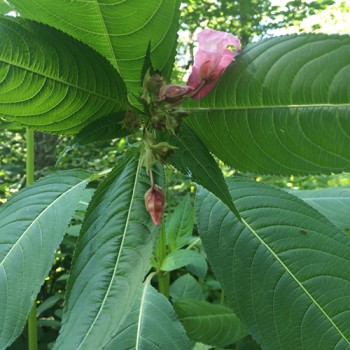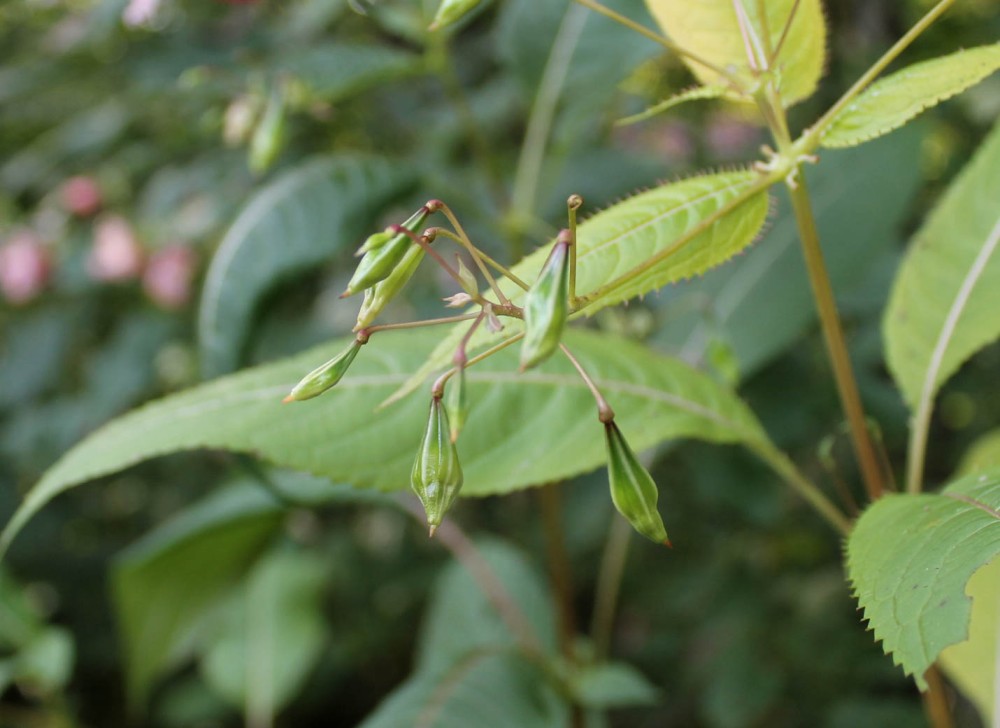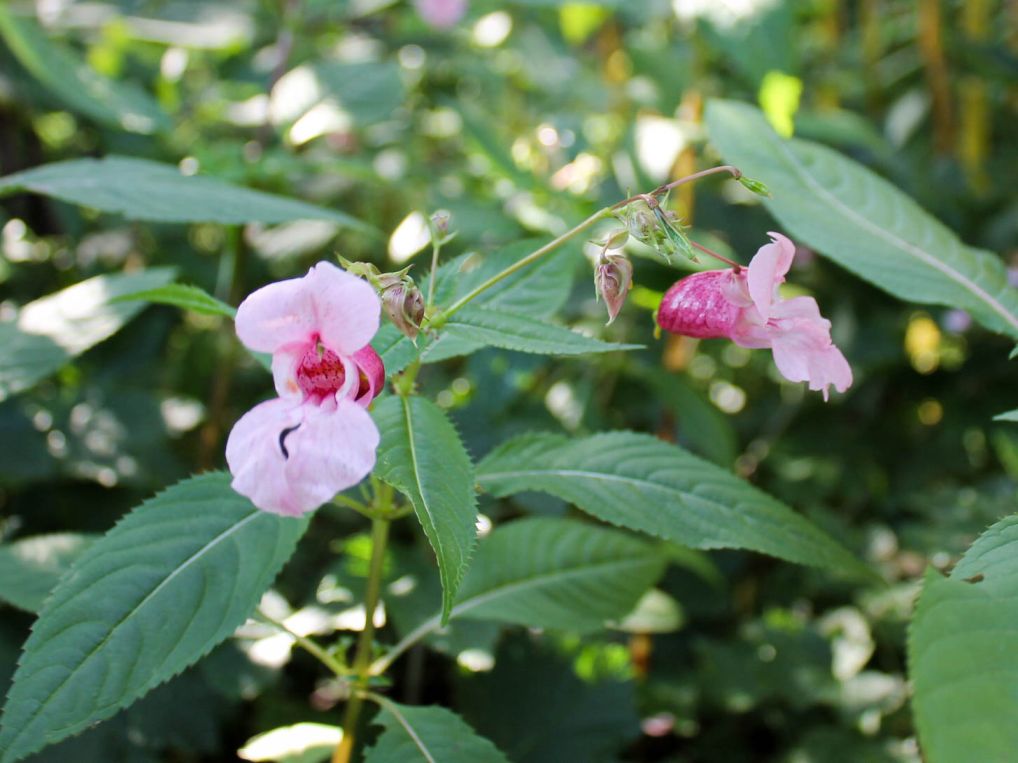Balsam plants, scientifically known as Impatiens balsamina, are beautiful annual flowers that add a pop of color to any garden with their brightly colored blooms However, like all plants, balsams are susceptible to diseases that can take a toll on their health and appearance. As a balsam plant owner, it’s important to be able to recognize common balsam diseases so you can take prompt action. This article provides an overview of some of the most prevalent balsam plant diseases, how to identify them, and effective treatment methods
Powdery Mildew
Powdery mildew is one of the most widespread diseases affecting balsam plants. It is caused by a fungal pathogen that coats plant surfaces in a white, powdery growth. Left unchecked, powdery mildew can significantly weaken and even kill affected balsam plants.
Identifying Powdery Mildew
- White powdery coating on leaves, stems, flowers and buds
- Leaf curling and distortion
- Stunted growth
- Flower discoloration
Treating Powdery Mildew
- Improve air circulation around plants
- Remove and destroy infected plant parts
- Apply fungicides like neem oil or sulfur early at first signs
- Use resistant varieties when available
Root Rot
Root rot is a common disease triggered by overwatering balsam plants and inadequate drainage Several species of fungi cause root rot, infecting and decaying the roots of the plant
Identifying Root Rot
- Wilting, drooping leaves and stems
- Stunted growth
- Yellowing, browning leaves
- Soft, mushy roots
- Plant collapse
Treating Root Rot
- Improve drainage and avoid overwatering
- Remove diseased plants and discard infected soil
- Sterilize pots before replanting
- Apply fungicide drenches as preventive measure
Botrytis Blight
Also called gray mold, botrytis blight is a fungal infection that can rapidly spread through balsam plantings. The fungus attacks leaves, stems, flowers and seed pods.
Identifying Botrytis Blight
- Brown/gray lesions on leaves, petals, stems
- Gray fuzzy mold on infected tissues
- Wilting of foliage and flowers
- Plant decay
Treating Botrytis Blight
- Remove and destroy affected plant parts immediately
- Improve air flow and reduce humidity around plants
- Apply fungicide sprays weekly as prevention
- Avoid overhead watering
Downy Mildew
Unlike powdery mildew, downy mildew causes pale yellow spots on balsam leaves and a white fuzzy growth on the undersides. It thrives in cool, damp conditions.
Identifying Downy Mildew
- Pale yellow leaf spots with defined edges
- White downy coating on leaf undersides
- Wilting, curling, or cupping leaves
- Stunted growth
Treating Downy Mildew
- Remove and destroy affected foliage
- Apply fungicides containing chlorothalonil or copper
- Increase sunshine and improve air circulation
Impatiens Necrotic Spot Virus (INSV)
INSV is a devastating viral disease that causes ring spots, wrinkling, and necrosis of balsam leaves and flowers, eventually killing the plant. It is transmitted by thrips insects and infected seed.
Identifying INSV
- Dark brown/black ring spots on leaves
- Leaves wrinkling, curling, twisting
- Flower necrosis
- Defoliation
- Collapse of the plant
Treating INSV
- Remove and destroy infected plants immediately
- Control thrips populations
- Disinfect tools and wash hands after handling plants
- Purchase disease-free seeds and transplants
Fungal Rust
Rust diseases are caused by a specialized group of fungi that first appear as yellow/orange powdery growths on the undersides of leaves. Rust eventually causes leaf drop.
Identifying Rust
- Yellow, orange or brown powdery spores on leaf undersides
- Dark/brown ‘rust’ pustules erupting through leaves
- Leaves turning yellow and dropping
- Stunted growth
Treating Rust
- Prune and remove infected leaves/stems
- Apply fungicides containing myclobutanil or triadimefon at first signs
- Increase air circulation around plants
Aphid Infestations
Aphids are small sap-sucking insects that feed in colonies on new growth of balsams. They secrete sticky honeydew and spread viral diseases.
Identifying Aphids
- Clustered colonies of green, yellow, black or white insects on stems and leaves
- Curled, distorted leaves and stunted shoots
- Sticky residue on foliage
- Sooty mold in honeydew
Treating Aphids
- Knock off insects with strong spray of water
- Apply insecticidal soaps or neem oil to plants
- Introduce ladybugs and other beneficial insects to feed on aphids
- Use reflective mulches to deter aphids

Himalayan Balsam (Impatiens glandulifera)French common name: Balsamine de l’Himalaya

Himalayan balsam is an invasive herbaceous plant that was initially introduced to North America as a garden ornamental.

When seed capsules mature and dry, they will explode when touched, shooting seeds in all directions!

Himalayan balsam flowers have a hooded shape that looks similar to a policemans helmet.
Order: EricalesFamily: Balsaminaceae
Did you know? Himalayan balsam closely resembles native jewelweed, another type of ‘touch-me-not’ plant.
Himalayan balsam is an invasive herbaceous plant that was initially introduced to North America as a garden ornamental. Himalayan balsam is widely distributed across Canada and can be found in eight provinces. Annual reproduction of this plant occurs in the summer, when the flowers are pollinated by insects. The insects may transfer pollen between flowers of conspecifics or from the same plant. Himalayan balsam typically grows to 1-3 m in height, with a soft green or red-tinged stem, and toothed leaves 5-23 cm long. The crushed foliage has a strong musty smell. Below the leaf stems the plant has glands that produce a sticky, sweet-smelling, nectar. Himalayan balsam flowers are pink, with a hooded shape, 3-4 cm tall and 2 cm broad; the flower shape has been compared to a policeman’s helmet. Himalayan balsam creates dense and tall stands that prevent native plants from establishing and reduce biodiversity. This plant is a prolific nectar producer and produces about 800 seeds per plant. This annual species can aggressively replace native perennial plants along riverbanks, leading to soil erosion.
Stem: The hollow, purple/reddish stem grow between 1-3 m tall.
Flowers: Himalayan balsam’s pink flowers are a key ID feature in the late growing season. The flowers have a hooded shape and look similar to a policeman’s helmet.
Leaves: This plant has long, toothed leaves 5-23 cm long.
Seeds: Himalayan balsam seed capsules will hold up to 16 seeds. This plant is a “touch-me-not” plant, which means that when its seed capsules mature and dry, they explode when touched. Seeds can spread up to 5 m from the parent plant.
Himalayan balsam is widely distributed across Canada and can be found all of provinces except Saskatchewan. It has naturalized in the United States.
Himalayan balsam produces dense stands, creating monocultures and reducing biodiversity by limiting nutrient and habitat availability and shading out native plants.
Himalayan balsam’s prolific nectar production draws pollinators away from other plants and is a main draw for gardeners wanting to attract more pollinating species. However, growing this plant should be avoided, as it spreads rapidly and will quickly overtake native species and reduce biodiversity.
One Himalayan balsam plant can produce over 800 seeds, allowing them to spread quickly – both naturally through wind and animal dispersal, and through human interference once the seed pods dry and explode when touched.
This species can aggressively replace native perennial plants along riverbanks, over time leading to soil erosion.
Mechanical control, by repeated cutting or mowing, is effective for large stands, but plants can regrow if the lower parts are left intact. Cutting the plant below the lowest node can help stop regeneration. Access to the sides of riverbanks can be difficult and inaccessible stands can quickly recolonise accessible cleared areas, so vigilance is needed if an area is to be effectively cleared.
Smaller infestations can be easily controlled by hand-pulling, as the root of Himalayan balsam is very shallow. However, management should only take place if there are no visible seeds, as disturbing the seeds can lead to further infestation in the disturbed soil. If management must take place when seeds are present (typically in late May), place a bag over the top of the plant to avoid further dispersal. As the seeds are not very robust and only last about 18 months, management can be completed in two years as long as proper disposal has occurred and all plants have been removed.
Once plants are removed, they should be placed in a black garbage bag and placed on an impermeable surface for up to 1 week. This will kill off any viable materials before disposal.
Guidelines for Diagnosing Plant Problems
FAQ
How do I know what disease my plant has?
How to treat plant diseases?
How do you get rid of balsam?
What are some common plant diseases and how can they be prevented?
Are Himalayan balsam plants dangerous?
Himalayan balsam ( Impatiens glandulifera) is a very attractive but problematic plant, especially in the British Isles. While it comes from Asia, it has spread into other habitats, where it pushes out native plants and can wreak serious havoc on the environment. Keep reading to learn more about how to control Himalayan balsam plants.
Is it good to have balsamic vinegar?
Balsamic vinegar, and vinegar in general, appears to be effective at slowing the speed at which glucose enters the blood. At least one small Lund University study reported in the European Journal of Clinical Nutrition that vinegar(acetic acid) added to a starchy meal reduced the glycemic response to the meal. This reduction may be due to vinegar’s ability to slow gastric(stomach) emptying rates, which could prove beneficial for individuals with impaired insulin sensitivity. Balsamic vinegar contains six percent acetic acid, which is slightly higher than the acetic acid in distilled and apple cider vinegar. There is little reason not to add balsamic vinegar to the diet. Balsamic vinegar is a safe condiment that contains no fat and very little natural sugar.
What is a balsam fir?
Step into much of the Canadian wilderness and you’ll likely come across a balsam fir ( Abies balsamea ). With its distinctive cone shape and vibrant green needles, this conifer is a staple of the Canadian landscape, stretching from Newfoundland to Alberta.
Is Himalayan balsam an invasive plant?
Himalayan balsam is considered an invasive non-native plant and is listed on Schedule 9. Under the provisions made within Schedule 9 of the Wildlife and Countryside Act 1981, it is an offence to plant or cause Himalayan balsam ( Impatiens glandulifera) to grow in the wild.
